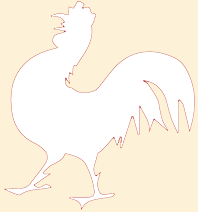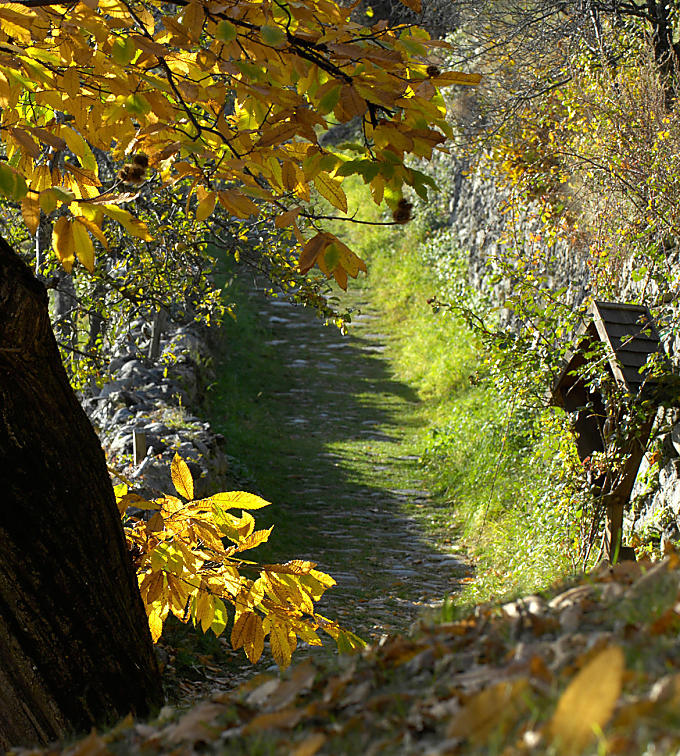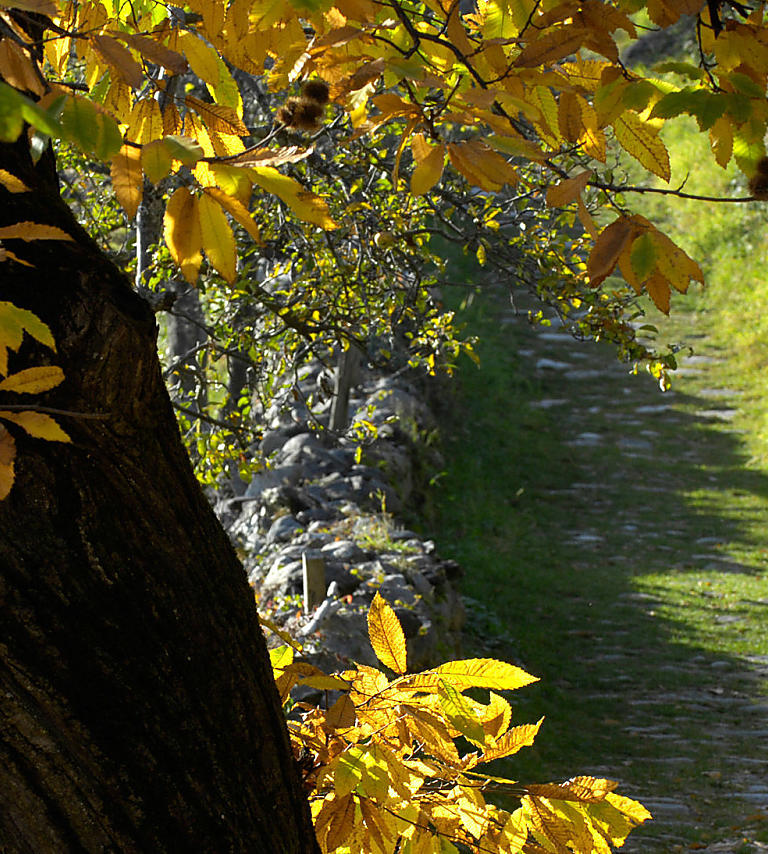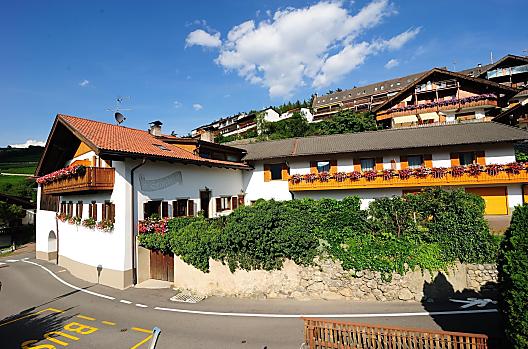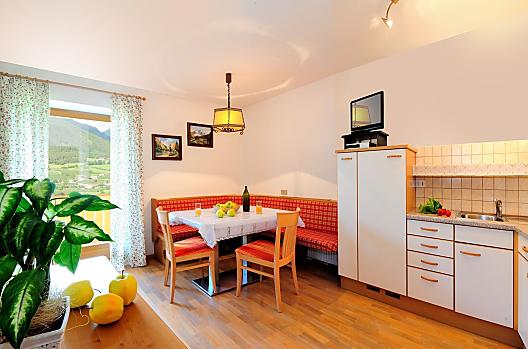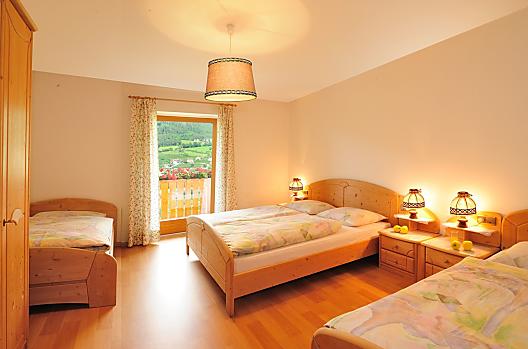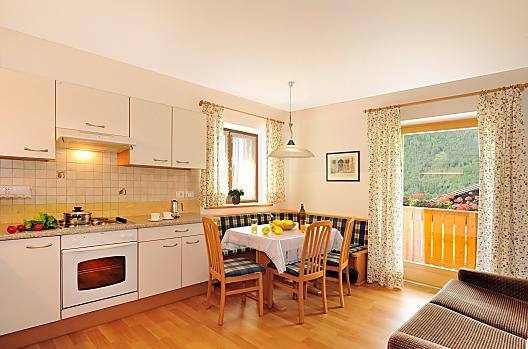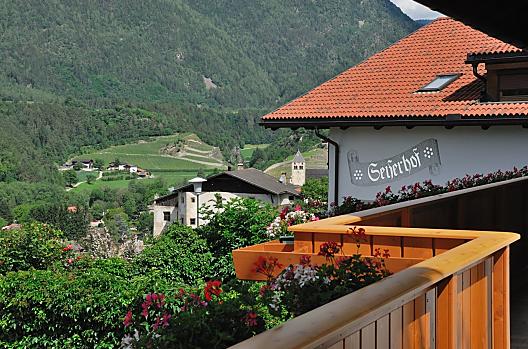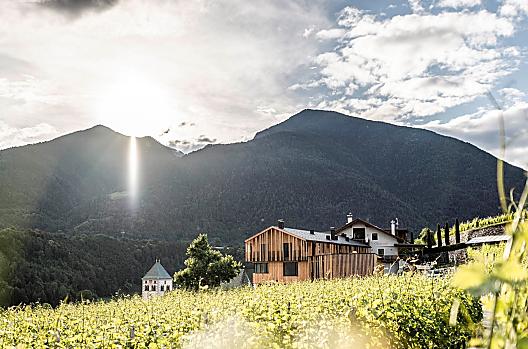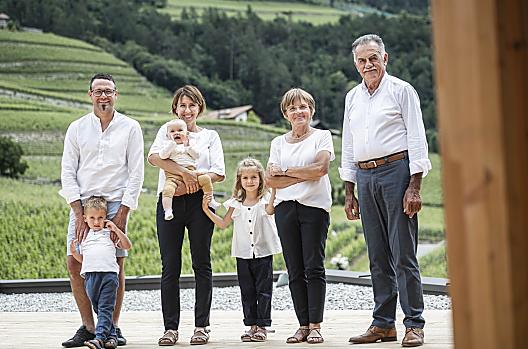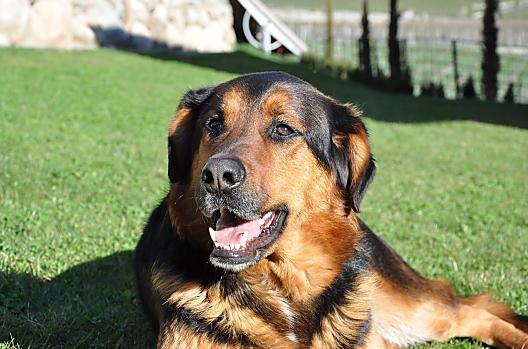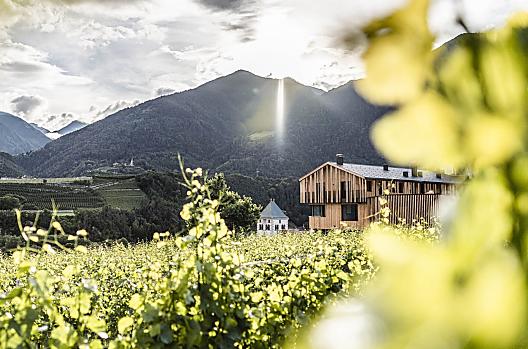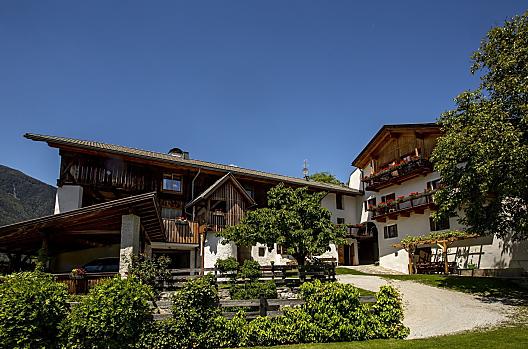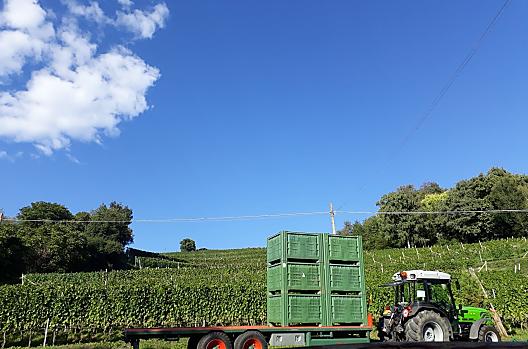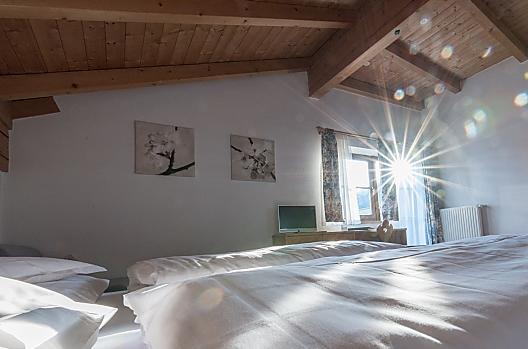Day trip destination
Keschtnweg Chestnut Trail: autumnal gem in Eisacktal valley
The Eisacktal valley Keschtnweg trail combines hiking with enjoyment. Along the way you can sample typical South Tyrolean cuisine and pass by extensive chestnut groves.
Countless chestnut trees grow on the slopes amidst mixed woodland and lush meadows. In autumn, their tasty fruits, either roasted or boiled, have long played a major role in the cuisine of South Tyrol. The Eisacktal valley 'Chestnut Trail' runs beneath and alongside these enormous knarled trees, which particularly thrive here. This path is 60 kilometres long and those wishing to do all of it can start in Brixen and finish – not on the same day, of course – in Bozen.
Along the way, which is divided into four legs, there are artistic, cultural and natural monuments at intervals to admire and local produce to enjoy. It leads to spots steeped in legend, too, which were once the realm of witches, fairies and ghosts.
The path is especially popular between September and the start of November, as this is the season dedicated to the tradition of 'Törggelen'. But it's not just a much-loved route in autumn; hikers will find the variety in the vegetation fascinating all year round.
From Neustift to Bozen
There are places to stop off for refreshment or stay overnight at along the Chestnut Trail. The first leg leads from Neustift Abbey through ancient chestnut groves for 16 kilometres, past three interesting little churches and onwards to Feldthurns. This is where the second leg begins, going via the road through the sunny mid-range mountains of Feldthurns. Several rustic inns invite hikers to stop off for a bite to eat along the way in this section of the trail. The Renaissance castle of Velthurns and Säben Abbey are worth a visit. At the end of this stretch, you descend on a winding path towards Klausen, accompanied for a while by a view of the roofs of this artists' town. The third stage of the Chestnut Trail leads from Barbian through fields, meadows, little hamlets and mixed woodland and partly through the craggy Gonderbachgraben. At Saubach, you can see the water of the Gonderbach stream crashing down to the valley over a rocky ledge. This section has a lot to offer admirers of eccesiastical art as well as nature lovers, as there are several chapels to discover between Leitach and the Ritten high plateau.
The fourth and last leg of the Chestnut Trail leads to the castle of Schloss Runkelstein in Bozen. There are a few special attractions on the way, such as Feuersalamandertal, or 'valley of the fire salamanders' and the ruins of Stein castle. The famous earth pyramids at Unterinn on the Ritten plateau are quite impressive. The material that these skittle-shaped loam structures sporting stone hats were fashioned from over hundreds of years of rainfall is 25,000 years old.

Törggelen
Along the Chestnut Trail, there are not just lots of sights, but you encounter farmsteads serving food again and again. These rustic inns offer 'Marenden', or light snacks', featuring dishes typical for the Eisacktal valley and invite people in for 'Törggelen' in autumn. This is a culinary tradition that goes back to the old farmers' and wine dealers' custom of tasting the 'Sußer', the new, barely fermented grape juice, and later the 'Nuien', the fermented grape juice. There is also 'Speck' (cured pork), 'Schüttelbrot' (a type of crispbread), house sausage with cabbage, cold cuts of meat with spare ribs and cured ham. Of course, a hearty barley soup, dumplings and 'Schlutzkrapfen' ravioli are an essential part of it. Afterwards, the feast continues with roasted 'Keschtn', otherwise known as chestnuts as well as ‘Krapfen’ or fried doughnuts.
Chestnut Trail
Further information
The Keschtnweg Chestnut Trail from the Neustift Monastery (560 m) to Terlan/Terlano (250 m) runs along the right bank of the Eisacktal Valley. It is in autumn, at the time of the Törggelen, that the trail is at its most eye-catching and many taverns and inns along the way offer traditional Törggelen dishes. The lush, diverse vegetation and simple, rural way of life also attracts visitors in spring and early summer.
Information about the public transports you can find on https://altoadigemobilita.info/ or at the infopoint mobile (phone: +39 0471 220880; mail: contact@suedtirolmobil.info)
The moderately difficult 90 km-long Keschtnweg trail isn’t necessarily just a single, long-distance hike. It can also be broken up into separate one-day stages. The Keschtnweg is regularly signposted as it crosses the terraced slopes varying between 700 m and 980 m.
The route can be divided into five stages, a day at a time. However, finding accommodation at the last minute could be a problem and should thus be booked in advance. In late autumn there are still many tourists visiting Brixen and its surroundings, especially during the popular Törggelen season. Info boards are positioned along the route as it crosses through a diverse landscape with mixed forests and meadows. On the trail, farmers offer regional products. The natural monuments along the Keschtnweg testify to an age-old mountain culture recounting mysterious tales of witches, fairies and spirits.
THE KESCHTNWEG
Length: ± 82 km
Altitude difference (ascent): 4,050 m
Highest point: 1,000 m (above Signat/Signato on the Ritten/Renon)
Sections: 5 stages
Difficulty level: moderate – but no special equipment is required
Recommended period: from March to November.
Monastery Novacella/Neustift


